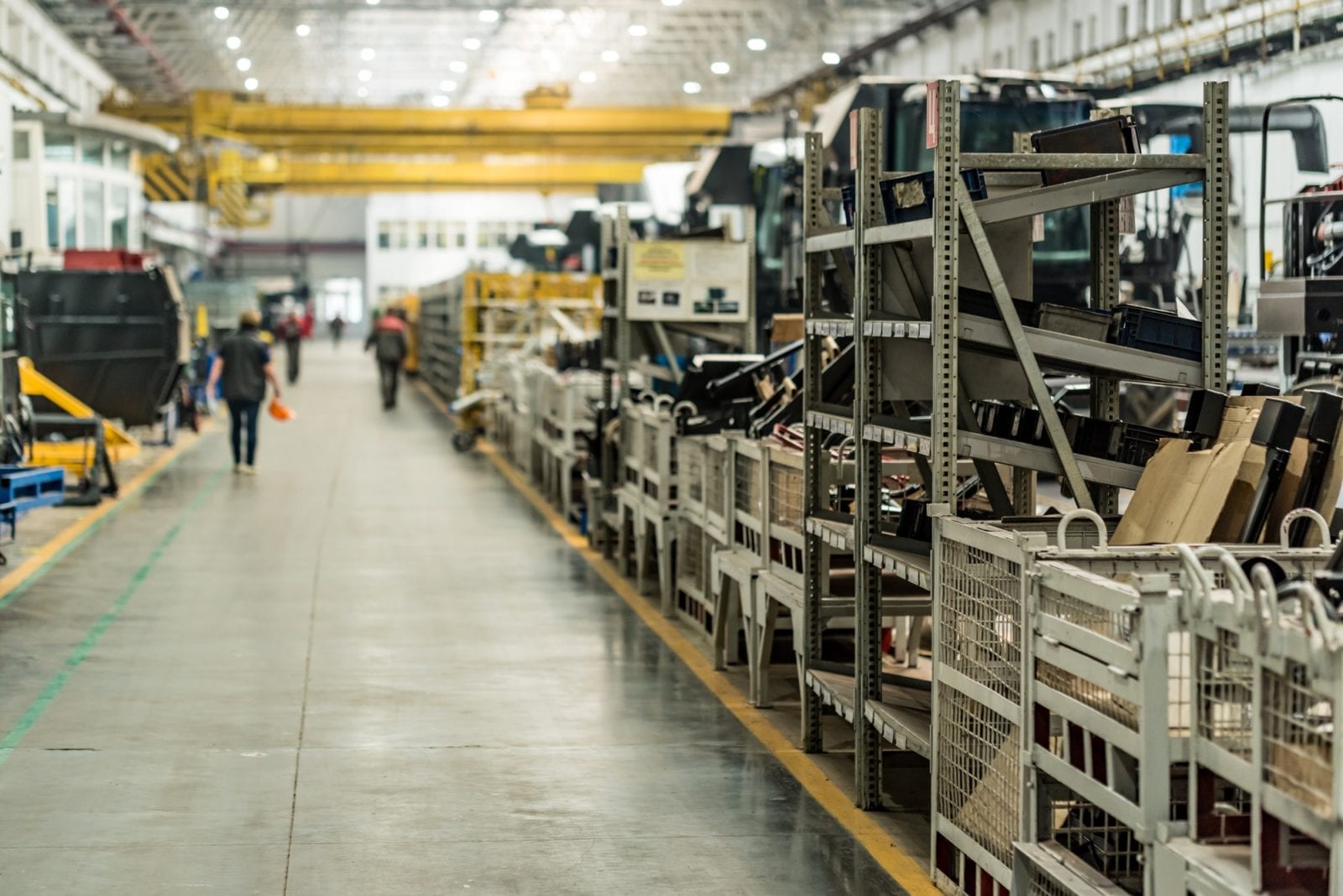Selling physical products can be the most satisfying feeling out there. Online selling can help in turning your good business idea into reality. But, only if you are careful enough to pay attention to yiru inventory. If you’re starting small, it might seem comfortable. However, as you grow and store your inventory in multiple warehouses, you need warehouse inventory management for efficiency. This small step will make all the difference to your business.
The idea is that an inventory is one of the most important assets for your business. It has the power to make or break your business without much ado. For this reason, you must leverage a warehouse inventory management system for the job. With a warehouse inventory management system, you can do a lot. Right from streamlining the order fulfillment process to delivering the product to the customer. And even managing the customer satisfaction level. Warehouse inventory management has more than a few benefits at hand.
If you look at it, warehouse inventory management forms the backbone of your business. It helps you bridge the gaps in your business and provide a seamless experience to the customer. While it is essential that your customers get a good experience, it is also important that your staff gets seamless operations at the backend.
Because unless your backend operations are sorted, there is hardly anything you can do for the customer experience. It is natural to have doubts about investing in warehouse inventory management. However, once you know the advantages of it, you will want to use it regardless of the size of your business.

Fulfilling Orders And the Need for Warehouse Inventory Management
As we move forward with the details of the warehouse inventory management system let’s take a look at a scenario where inventory can have a deep impact on your business.
- You put all your efforts in creating wonderful campaigns for your business. The results are effectively shown when conversions start driving. So, you start receiving orders.
- Upon receiving an order, you pick and pack the product. But, before that the first thing that you do is update the customer about the same. Notifications are equally unimportant part of ecommerce. They enhance the customer experience and provide value to the customer.
- Once your product is packed, you put it in a shipping box and assign a courier partner. Your courier company then picks the product and ships it to the customer.
By now you probably think that your job regarding the order is done. You have done everything right in the order fulfillment chain. Moreover, you also believe that the customer is going to have a great time when they see your product. Let’s see what can happen next!
- As your product gets delivered to the customer’s doorstep, they receive it. The next intuitive action is to open the package.
- Upon opening the package, the customer finds the product damaged!
And so all of your efforts until now have turned into vain. It is always disappointing when the customer finds the product damaged or expired. They not only return such a product but also think less of your business.
So, what exactly went wrong then? You sent the customer order notifications, packed the product right and shipped it well. If anything is right with the most of the fulfillment part, what is it that you’re missing/
Seems like the answer lies in your inventory. And this is where you need warehouse inventory management!


What is a Warehouse Inventory Management?
Now that you know how inventory can turn your customer experience upside down, let’s move onto managing it effectively. A warehouse inventory management system can create a big difference in your business. It can take care of your inventory and help you make the most of it.
There are two common scenarios that you need to understand before diving down into warehouse inventory management. To begin with, you store your inventory in any of the following ways-
- Either you store all of your inventory in one place. This is most likely if you have a small business. Or you might have just started with selling online.
- Alternatively, you can store your inventory at multiple warehouses. This serves many purposes. If you have customers all over India, you can choose to place your inventory at different locations. This will reduce your shipping duration and cut down shipping costs.
Understanding the Importance of Warehouse Inventory Management
In the second case, when your inventory is stored in multiple warehouses, it becomes a little difficult to manage it. You need to keep an eye on your stock levels at every palace. Because running out of your inventory even at the small locations can mean hampering your business. A warehouse inventory management system can do the trick here.
For example, you might be selling kitchen items to your customers. These may include appliances as well as utensils and serveware. Therefore you might feel the need to store these at different locations. A master inventory in this case would be a comprehensive catalog of the products that you have for your brand. It would include all the brands that you sell and the overall levels of your stock. But, what if you want to know the quantity and quality of the inventory at a particular location? This is where the warehouse inventory management system comes into the picture.
A warehouse inventory management system lets you know about the details of your inventory. Moreover, it also gives you qualitative information about it which is locations specific. This means that by sitting at one palace you can get complete transparent information regarding your business.
As a business you have to maintain the standards of inventory across warehouses. It is obvious that each of these will have its own needs and specific requirements. But, with this some sort of standardization helps in easing the entire process of order fulfillment. After all, you want your inventory fast moving and order fulfillment process to be seamless.

Best Tips for Warehouse Inventory Management
Now that you know what warehouse inventory management is, let’s move on. The next task is to take a look at the steps by which you can ensure proper warehouse inventory management. Read on below to find out!
Monitor Your Stock
The first and foremost task is to monitor your stock levels. Before you decide on implementing a warehouse inventory management system, analyze your stock levels. Make sure that you know what your products are. This is important for kitting them together and storing them safely. So, if you know that two products sell in a combo, make sure that you place them in the same warehouse. For example, a microwave oven and mittens can be placed together. Alternatively, if you are selling certain fragile items, you need to store them safely. For this you will have to make provisions for them.
Leverage Inventory Management Tools and Techniques
If you are selling physical products, you must implement an inventory management technique. This can help you keep a control of your inventory. Some of the common inventory management techniques are first in first out, last in first out and more.
An inventory management technique for warehouse inventory management serves several purposes. It optimizes your order fulfillment process. Similarly, it also makes sure that none of your inventory goes to waste.
Implement a Centralized System
For the effective implementation of your warehouse inventory management, make sure you have centralization. A reference point for your inventory can help you keep an overall check on your business. For example you will have to map the inventory of all warehouses that is sold across all the channels under master inventory. This helps keep a track of an entire business’ inventory in one place.
Work on Your Warehouse Space
Warehouse space optimization is fundamental for warehouse inventory management. When you’re storing goods in yoru warehouse, you need to make sure that your warehouse space is adequately utilized. Keep the products that are bestsellers closer to the packing area. Additionally products that are sold target must be kept side by side. Warehouse space optimization ensures fast movement of goods for picking and packing as well as reduction of any kind of hindrances in order fulfillment.
Take the Assistance of Automation
Automation can take your business to the next level. Automation in warehouse inventory management ensures less dependence on manual tasks. You reduce errors caused due to manual efforts and as a result, become more efficient.
Measure Performance
Measure the performance of your warehouse inventory management practices from time to time, this will give you a check on the factors that you are lacking. Moreover, it will also help you understand what additional efforts you need to take.
Conclusion
Inventory management can mean a lot to your business. Try to automate the process as well as adopt a reliable tool for the task. Dash101 is one such platform that can help you smoothen your order fulfillment process. Not only do you get to ship seamlessly but also build an online store that takes you to your customers.







Leave a Review